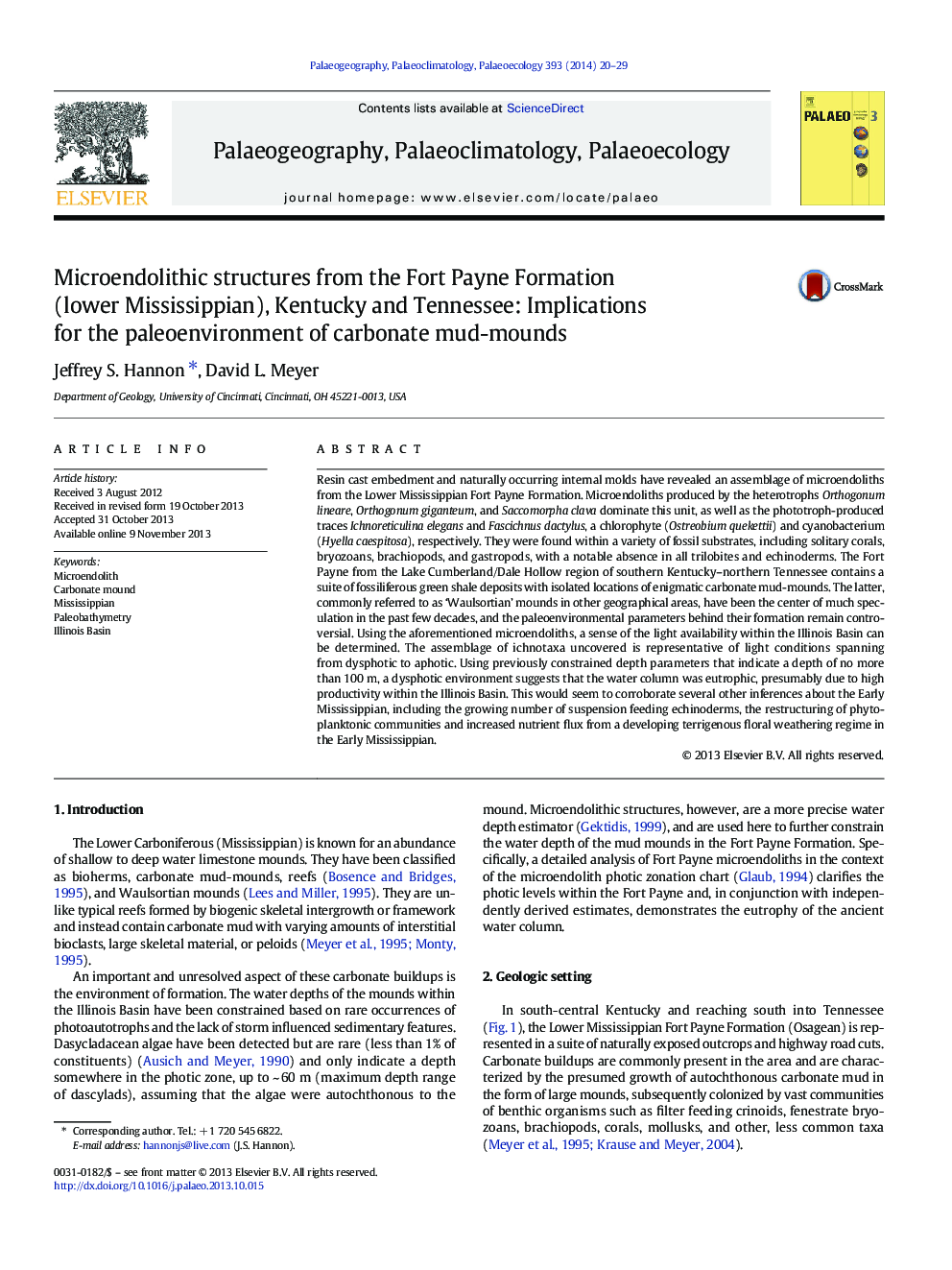| کد مقاله | کد نشریه | سال انتشار | مقاله انگلیسی | نسخه تمام متن |
|---|---|---|---|---|
| 4466473 | 1622197 | 2014 | 10 صفحه PDF | دانلود رایگان |

• First documentation of Early Mississippian microendolith communities
• Determination of heterotrophic ichnotaxa suggests dysphotic depositional conditions.
• Dysphotic shallow water was caused by periods of increased productivity levels.
Resin cast embedment and naturally occurring internal molds have revealed an assemblage of microendoliths from the Lower Mississippian Fort Payne Formation. Microendoliths produced by the heterotrophs Orthogonum lineare, Orthogonum giganteum, and Saccomorpha clava dominate this unit, as well as the phototroph-produced traces Ichnoreticulina elegans and Fascichnus dactylus, a chlorophyte (Ostreobium quekettii) and cyanobacterium (Hyella caespitosa), respectively. They were found within a variety of fossil substrates, including solitary corals, bryozoans, brachiopods, and gastropods, with a notable absence in all trilobites and echinoderms. The Fort Payne from the Lake Cumberland/Dale Hollow region of southern Kentucky–northern Tennessee contains a suite of fossiliferous green shale deposits with isolated locations of enigmatic carbonate mud-mounds. The latter, commonly referred to as ‘Waulsortian’ mounds in other geographical areas, have been the center of much speculation in the past few decades, and the paleoenvironmental parameters behind their formation remain controversial. Using the aforementioned microendoliths, a sense of the light availability within the Illinois Basin can be determined. The assemblage of ichnotaxa uncovered is representative of light conditions spanning from dysphotic to aphotic. Using previously constrained depth parameters that indicate a depth of no more than 100 m, a dysphotic environment suggests that the water column was eutrophic, presumably due to high productivity within the Illinois Basin. This would seem to corroborate several other inferences about the Early Mississippian, including the growing number of suspension feeding echinoderms, the restructuring of phytoplanktonic communities and increased nutrient flux from a developing terrigenous floral weathering regime in the Early Mississippian.
Journal: Palaeogeography, Palaeoclimatology, Palaeoecology - Volume 393, 1 January 2014, Pages 20–29